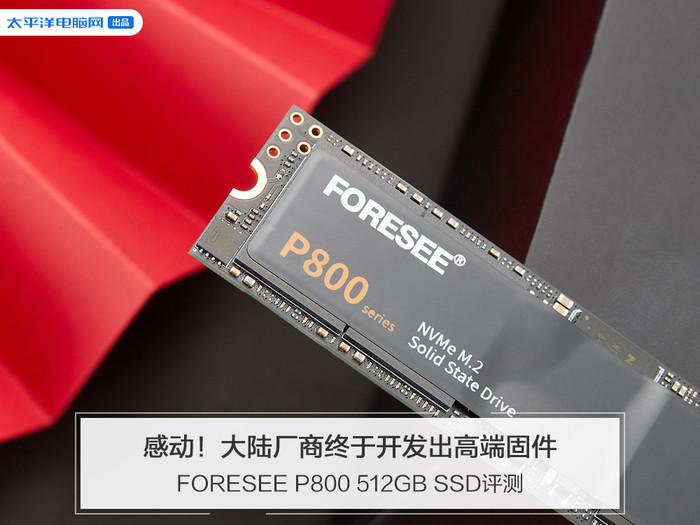
FORESEE P800 M.2 SSD. Reference price. No quotation for the time being.
Today, Super Continental got the FORESEE P800, which is a high-end positioning consumer SSD product. I have experienced it for a few days to share my review experience.
. I have to say that the Marvell master control.
To get to the point, FORESEE P800 let”s focus on the Marvell (hereinafter referred to as horse card) 88SS1092 it uses.
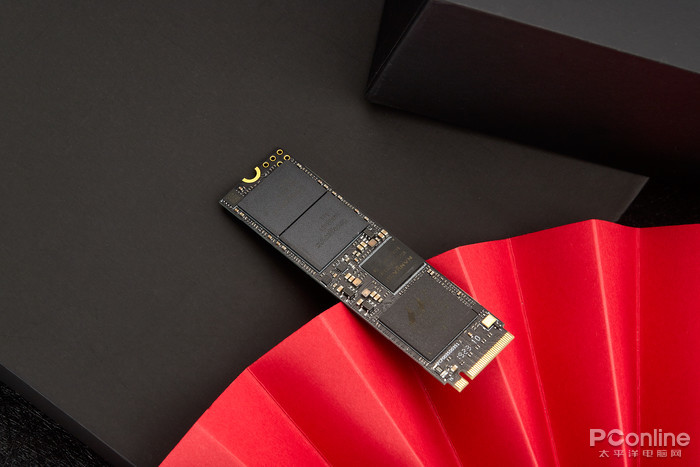
Although this master is not a new product, Jiang Bolong is still the first manufacturer in the mainland to independently develop horse brand high-end master firmware.
The main control of horse card has a feature: it only provides the main control chip, and the firmware needs to be developed by the manufacturer.This is equivalent to a capability screening for manufacturers, and those who have the ability to develop firmware can use it to prove their strength, and can obtain SSD products with good performance.
However, the “right to use” of high-end master control is still in the hands of a small number of powerful manufacturers. Jiang Bolong successfully developed 88SS1092 master, making it among these few powerful manufacturers, which provides a solid backing for the long-term development of FORESEE brand products in the domestic storage market.
. Material design: copper sheet heat dissipation, one-sided particles + DRAM cache + main control.
The SSD obtained by Supercontinent has no formal packaging, only a well-packaged antistatic bag, and it is reported that the SSD will not be officially released until Q1 in 2020.
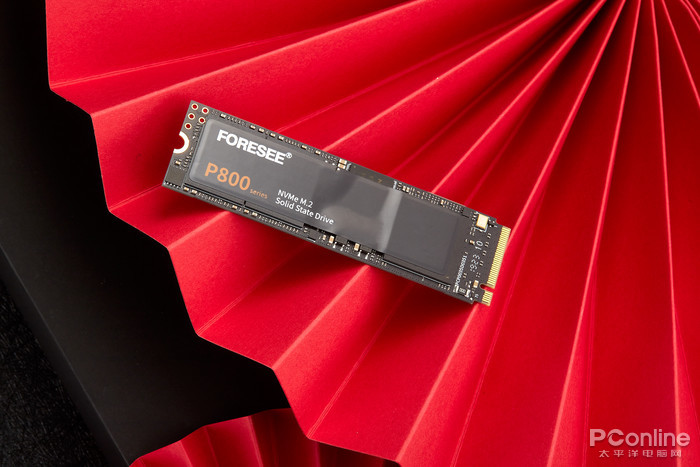
There is only a black model label on the front, but there is stuffing inside the label, and there is a piece of copper hidden in each of the particles and the main controller for heat dissipation, and the heat dissipation effect will be measured later.
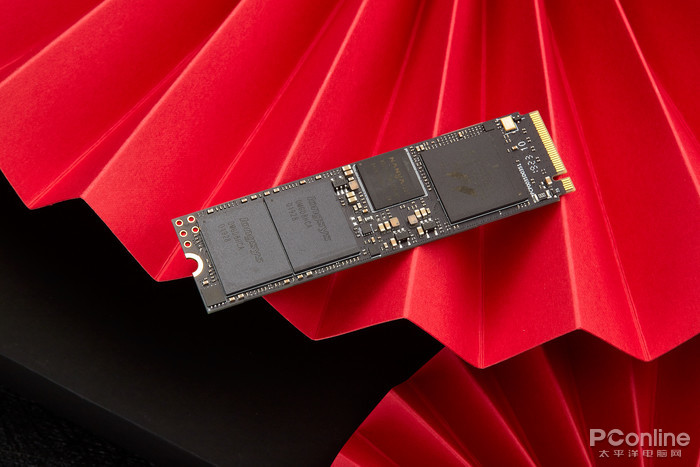
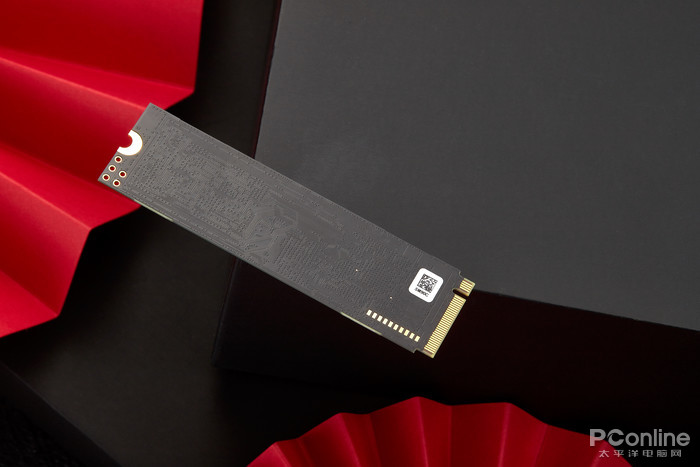
In the 512GB version, only one side has a component, and there is no reserved particle cache welding position on the back. The P800 has an optional 256GB-2TB capacity version, which is well suited to the needs of current user groups.
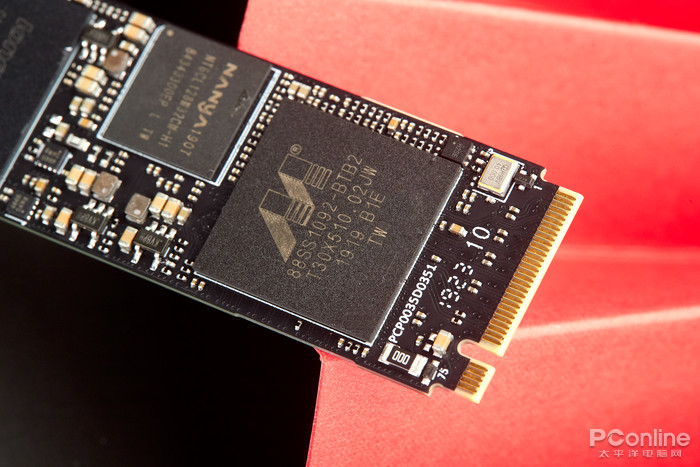
The master chip, 88SS1092 of Horse, is stronger than 88SS1093, has 8 flash channels, supports higher capacity, and uses PCIe 3.0X4 interface. The difficulty of developing the master has been mentioned earlier, so I won’t go into details.
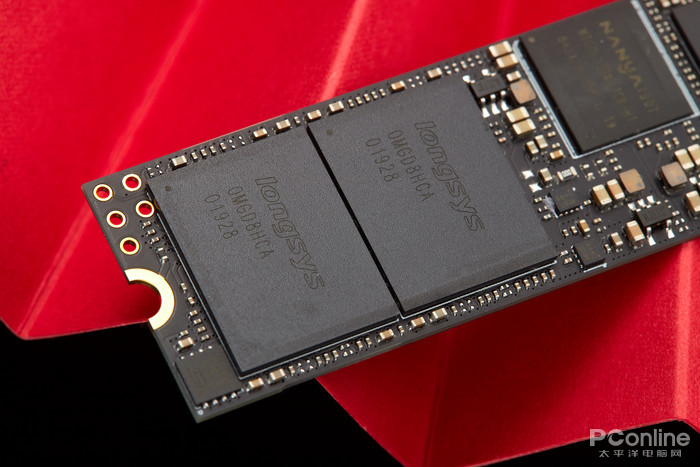
As for flash memory particles, we only know that TLC particles are used, and we are not sure which flash factory particles are encapsulated internally, but the flash memory particles that are generally matched by the master of the high-end horse card will not be bad.
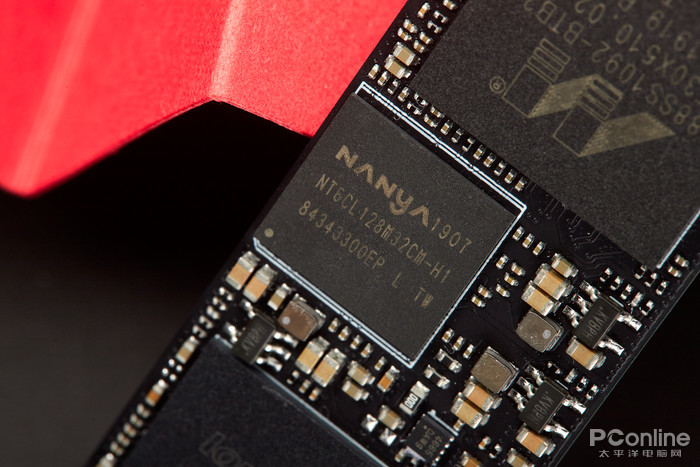
The LPDDR3, size of the cache particles is South Asia and the size is 512MB.
. Performance testing:
Most of the SSD test projects are new versions of test software, including CDM 7. 0, AS SSD Benchmark 2. 0, Anvil Pro, etc., as follows.
CrystalDiskInfo Information Identification:
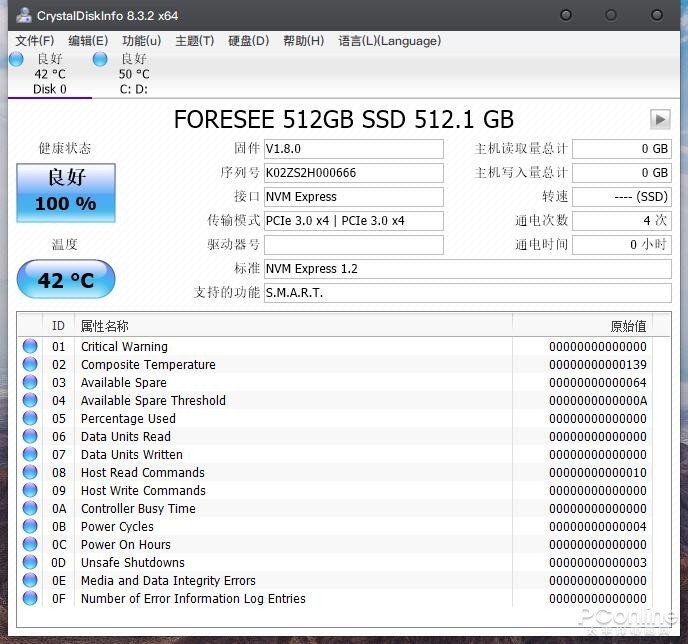
The firmware number of the FORESEE P800 has come to V1.8.0, and it is estimated that many versions of the firmware have been updated in the test product before getting it. In other specifications, the P800 adopts PCIe 3.0 X4 channel and NVMe 1.2 standard. The standby temperature is maintained at 42 °C for 10 minutes, which is cool for the 88SS1092 master.
AS SSD Benchmark Test:
AS SSD tests will synthesize the CPU performance score, so no matter how you measure it, the speed will be a little lower than the official nominal and actual use, which is a normal phenomenon.
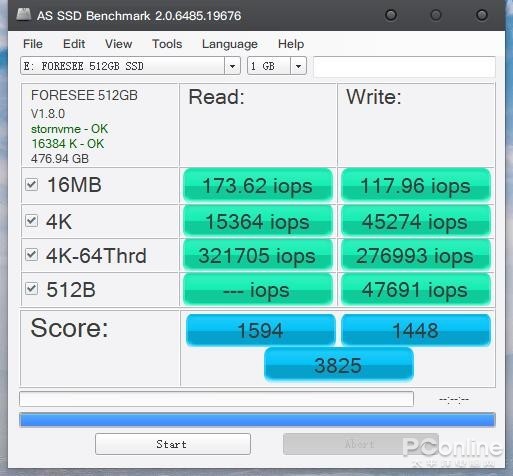
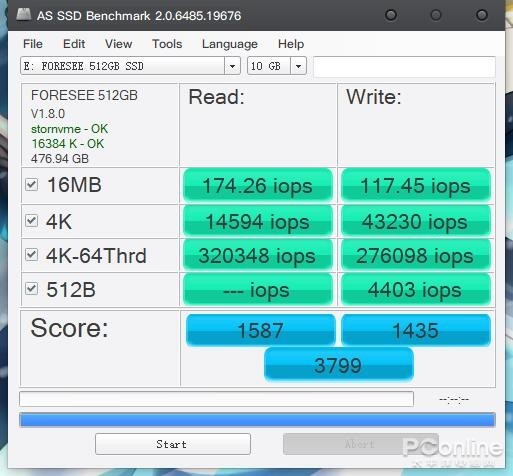
In the AS SSD Benchmark test project, we changed the performance evaluation criteria to record the IOPS (which can be regarded as reads and writes per second) scores of random 4K reads and writes, FORESEE P800.The random 4K reading and writing scores were 14594 IOPS and 43230 IOPS.
When we use IOPS to record SSD performance for the first time, most people may have no idea. In the near future, we will unify the data of the SSD products we have in hand to better compare the performance gap between them.
CrystalDiskMark Test:
CrystalDiskMark is the original reading and writing speed of the original disk, which is more accurate.
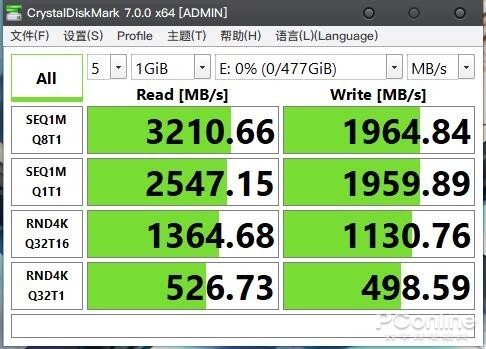
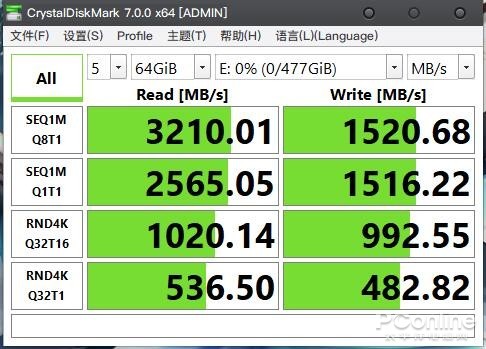
The new version of CDM can choose the 64GB file size to test, and the sequential reading and writing speed can reach in the test of 1GB files.3210.66MB/s,1964.84MB/s .
When the test size is increased to 64GB, the sequential write speed decreases.Dropped to 1520.68MB,For a 512GB-sized hard drive, this drop is within acceptable range.
ATTO Disk Benchmark Test:
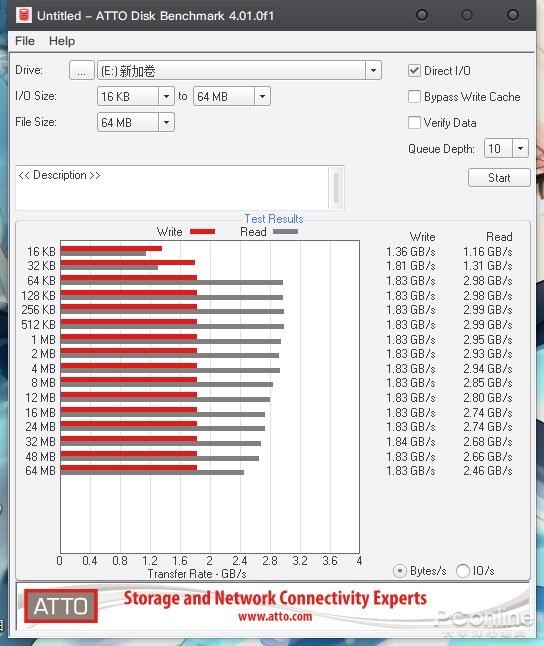
ATTO Disk Benchmark calculates the continuous reading and writing speed of small files. Here, there are 16 capacities from 16KB to 64MB. The interval with the fastest reading speed is 64KB, 4MB.The reading speed is maintained around 2.9GB/s., Which is close to the theoretical reading speed of CDM.
Except for the slow writing speed of 16KB,All maintained in 1.83GB/s from 32KB-64MB.
Anvil’s Storage Utilities Test:

In the TxBENCH test, the scores are slower than those of the previous software tests.The sequential reading and writing scores of 4MB were 2673.63MB and 1456.61MB, respectively, and the random reading and writing scores of 4K were 12493.74 IOPS,42102.89 IOPS and 1456.61MB, respectively.
HD Tune Pro High capacity stress Test:
To test the true face of SSD, it is necessary to measure the slow reading and writing speed.
Before testing, you need to talk about the SLC caching mechanism of the P800, which will play a role in HD Tune and file transfer later.

The FORESEE P800 has two SLC cache regions, a fixed SLC cache and an adjustable SLC cache. By intelligently adjusting the SLC cache region, the product can have a longer high-speed write time.
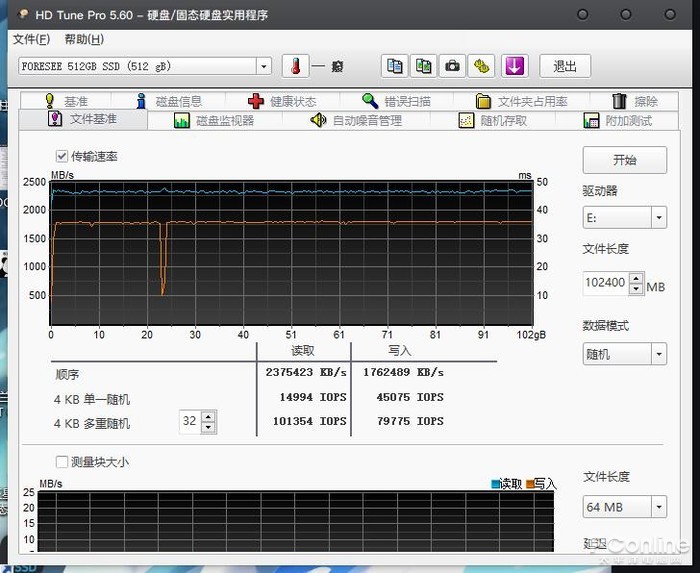
At the beginning, we used the random data of 100GB to test the speed of SSD, and the result was a bit shocking. except for the speed fluctuation during 23GB, we maintained the writing speed of 1750MB/s all the time, which is a very abnormal phenomenon. It feels that SLC space regulation has played a role.
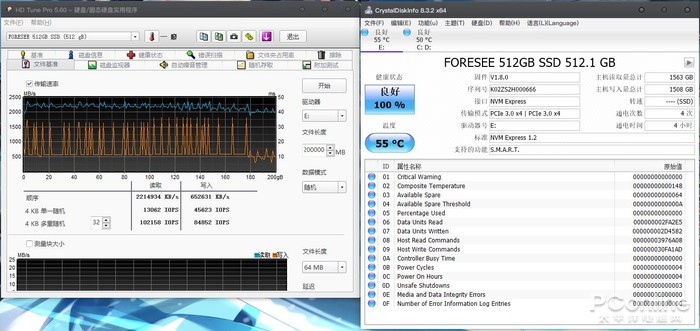
When we add the file to 200GB, the speed appears to be relatively normal at this time, and the speed drop occurs around the time of 5GB. And then up to 178GB, it kept bouncing back and forth in the range of 1600MB/s-500MB/s. In the final 180GB-200GB interval, the speed hovers around 500MB/s.
And after this wave of tests, also confirmed the supercontinent’s conjecture: in the empty state, the FORESEE P800 should be a complete simulation of the SLC situation.
From the second HD Tune test, we can see that the final drop speed stable capacity is about 160GB, TLC is a memory storage unit to store 3-bit data (3bit/cell), while SLC is a memory storage unit to store 1-bit data (1bit/cell), 160GB x 3GB 480GB, the removal of OP space is just so much.
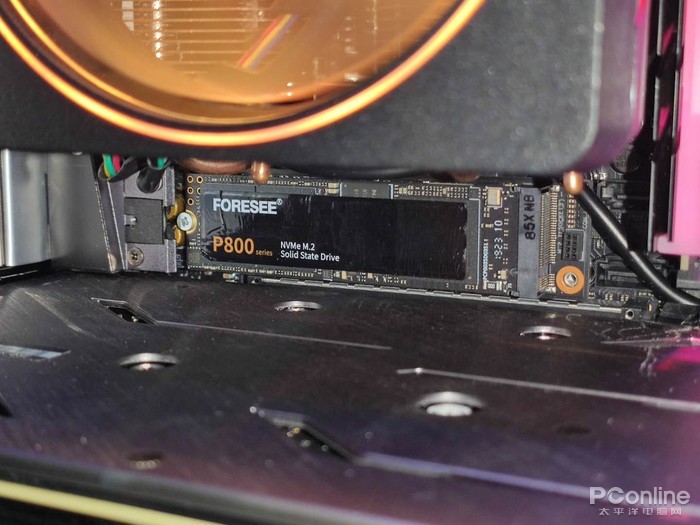
The test is installed in the ITX small mainframe to simulate daily use scenarios, the space is relatively narrow and more easily affected by the heat of the surrounding hardware. After the full test, the highest temperature recorded by CrystalDiskInfo is 55 ℃, which is still a long way from the official maximum operating temperature of 70 °C. this also proves that the FORESEE P800 is suitable for use on a narrow fuselage such as a notebook without overheating and speed loss.
Folder copy test:
Folder copy test by copying a folder containing large and small files to test the stability of the transfer speed and speed drop nodes, we use the game “Destiny 2” folder for file copy test, this test file size is about 85GB.
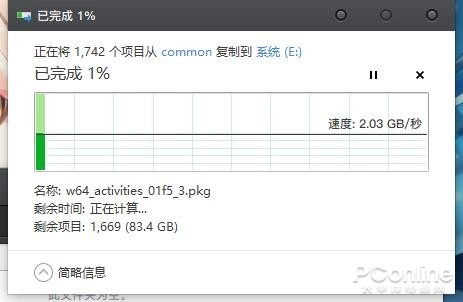
The speed of the first few seconds of transmission is relatively fast, stable at about 2GB/s.

When transmitting to 8.5GB, we can see that there is a relatively obvious sharp decrease in speed, and then the speed increases again during 17GB and stabilizes at 1.35GB/s.
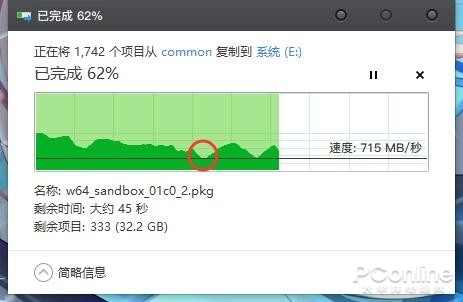
When transmitting to 34GB, the speed slows down to about 700MB/s again.
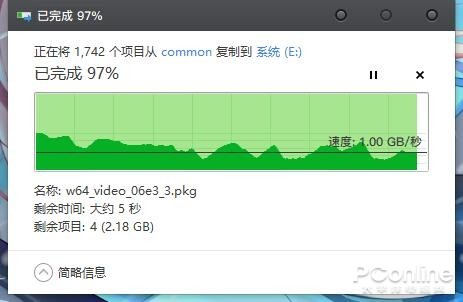
Since then, there has been an intermittent high-speed-low-speed situation, and the average speed of the whole journey is estimated to be around 900MB/s.
This seems to be more in line with the results of the HDTune test, the overall SLC played a certain role, but the speed is not stable, part of the interval can maintain the transmission speed above 1GB/s.
. PConline review room concluded: give “domestic” a chance, they are really working hard.
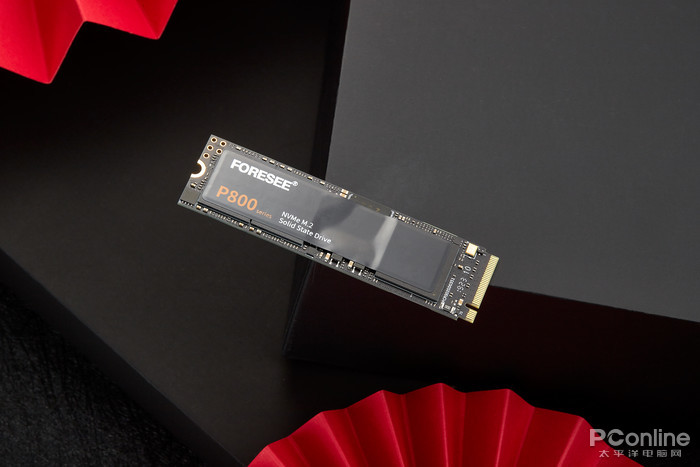
The solid state of mainland brands is not uncommon in recent years, but many of them are manufacturers who put up their brands and do not deserve the label of “domestic”. True domestic SSD is often taken out by netizens to whip the corpse, and the domestic particles that have been talked about for a long time have not seen the finished product, which inevitably makes the majority of netizens lose patience with made in China.
But since the domestic CPU began to have finished products, and Changjiang Storage got the breakthrough of flash memory particles, we also seem to see a little bit of the future of pure domestically made electronic products.
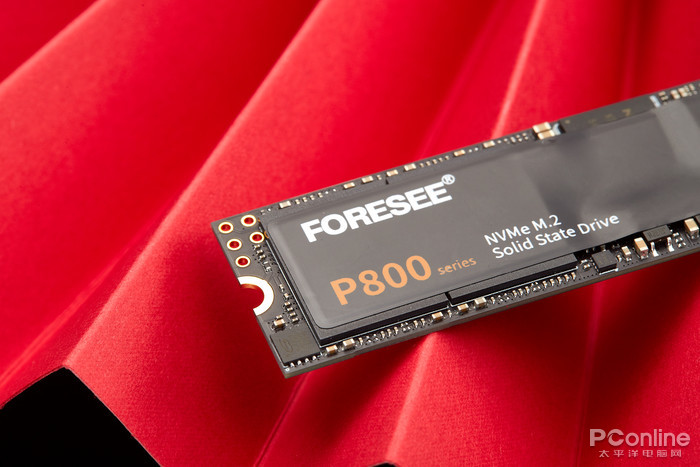
As a domestic embedded storage brand created by Jiang Bolong, FORESEE relies on Jiang Bolong’s strong R & D strength, and its products have good product quality. this P800 SSD has good temperature control ability and good performance, and can be well used on desktops and notebooks. Of course, there are inevitably some minor defects in the process of use, but for this kind of domestic which is still in the stage of growth and continuous efforts, please wait patiently, they are really working hard!
 |
Extensive Product Selection● Over 300,000 products ● 20 different categories ● 15 local warehosues ● Multiple top brands |
 |
Convenient Payment● Global payment options: Visa, MasterCard, American Express ● PayPal, Western Union and bank transfer are accepted ● Boleto Bancario via Ebanx (for Brazil) |
 |
Prompt Shipping● Unregistered air mail ● Registered air mail ● Priority line ● Expedited shipping |
 |
Dedicated After-sales Service● 45 day money back guarantee ● 365 day free repair warranty ● 7 day Dead on Arrival guarantee (DOA) |









